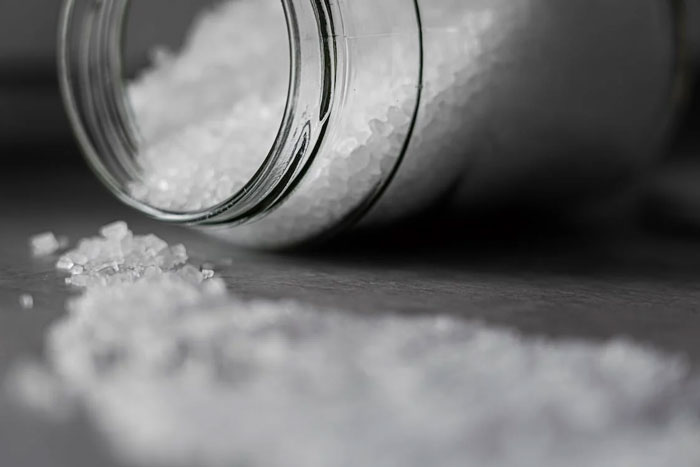
This post is a detailed discussion of ammonium nitrate, focusing on the hazards associated with it, and provides valuable ideas on how to safely handle the chemical, as well as what to do if you get exposed to it.
Please, read on:
What is Ammonium Nitrate?
Ammonium nitrate is a solid chemical substance, white in color that dissolves easily in water. And when it dissolves in water, it does not produce heat, rather it cools It is wildly used in the agricultural sector as vital agent in fertilizers.
Ammonium nitrate is popularly identified with the molecular formula NH4NO3 or N2H4O3.
Common Ammonium Nitrate Hazards
Over the years, chemicals have caused a lot of damage in people, environments, etc. ammonium nitrate has its own hazards too, even though it is not fierce like other chemicals.
When a high concentrated ammonium nitrate is inhaled, it affects the nostrils, lungs, and respiratory parts.
The victim begins to experience difficulty in breathing and air blockage. If a high concentrated ammonium nitrate is ingested, victim would experience series of pain in the head, nausea, weakened muscles, gastrointestinal disorders, pain in the abdomen, etc.
Also, when ammonium nitrate is mixed with water, the skin, eyes and nose of the individual making the solution can be affected.
Ammonium Nitrate Safety Handling Procedures
Ammonium nitrate may be harmful, but you can protect yourself from its hazards if you follow the right guide provided in this article.
When handling ammonium nitrate, do not make the mistake of eating, drinking, or even smoking. It is really dangerous.
It is advisable to protect your airways while working with this chemical in order to avoid inhalation.
Do not use ammonium nitrate in a confined place that has little or no ventilation, or in an environment that is close to fire because it is highly explosive.
When mixing ammonium nitrate with water to create a solution, beware of the mild gas it forms. Make sure your airways are well protected.
Ammonium Nitrate Safety Storage Procedures
Chemicals are not meant to be stored anyhow or in a random place. They are to be stored in a very safe place reserved for chemicals only.
Ammonium nitrate should be stored in a tightly sealed tank or container (depending on the quantity). Keep the chemical away from any combustible material, trace of fire or heat.
Ammonium Nitrate Safety Disposal Procedures
Disposing chemicals is a practice that should be done properly so as to prevent hazards to individuals, animals, and the environment. Follow these methods to dispose ammonium nitrate properly:
Although ammonium nitrate has a strong solubility in water, that does not mean that it is just like other liquid chemicals disposed through the drain.
It contaminates water and can affect aquatic lives. Some people think one of the best ways to dispose ammonium nitrate is by burying it, but that is really a bad idea. It is not advisable.
The best way to dispose ammonium nitrate is to collect and package it following the lay down specification and send it to an approved waste disposal facility.
How to Handle Exposures to Ammonium Nitrate
Apply these first aid measures if you get exposed to ammonium nitrate:
When ammonium nitrate is ingested, do not force the victim to vomit, it is a bad decision at that moment.
Call for medical help promptly. If this chemical is inhaled, transfer the victim to an environment with enough fresh air, before he/she is taken to a medical facility.
Whenever ammonium nitrate touches the skin, wash affected part properly with enough clean water for about 15-20 minutes.
And if the chemical enters the eyes, remove contact lens immediately (if the victim is wearing it), then flush chemicals from the eyes with enough clean water while the eyes are wide open.
Ammonium Nitrate Properties (Physical and Chemical)
Below are additional facts to know about ammonium nitrate to help you understand the chemical better.
Physical Properties: Ammonium nitrate is a solid chemical substance. It is white in color and has a crystal appearance. It is popularly known with its melting point of 169.6 degree Celsius and a boiling point of 210 degree Celsius.
It has a molar mass is 80.052 g/mol and has also been measured and proven to have a density of 1.72 g/cm3.
Chemical Properties: Ammonium nitrate has an effective solubility in water and it attracts moisture from the atmosphere and is therefore hygroscopic. It reacts fiercely when placed very close to fire. It is also acidic (pH 5.4)
Ammonium Nitrate Preparation
You can produce ammonium nitrate when ammoniumhydroxide is neutralized with a diluted nitric acid.
NH4OH + HNO3 → NH4NO3 + H2O
Some water and a little quantity of the nitric acid should be placed in a dish (that is capable of holding the solution) for evaporation till ammonium nitrate is produced.
Ammonium Nitrate Uses
Ammonium nitrate is mainly used in Queensland to make explosives. In agriculture, it is largely used to make fertilizers which help crops to grow fast and healthy.
Conclusion
Ammonium nitrate is a solid chemical substance that has many uses, especially in agriculture. This article provides a great deal of information about ammonium nitrate, including its uses, hazards, disposal method, and safety precautions and procedures to follow when you get exposed to the chemical.
